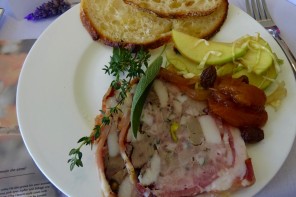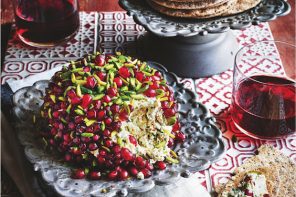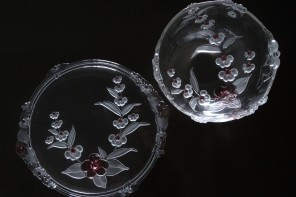
For centuries, the fabled city of Samarkand has been a magnet for merchants, travellers and conquerors. Set in a valley in Uzbekistan, the Silk Road stopover has long been a trading post for rice, sugar, garlic, soy beans, wine grapes and other products.
Over hundreds of years, numerous ethnic groups have passed through Samarkand, sharing and influencing each other’s cuisine. All these different ethnic groups – Uzbek, Tajik, Russian, Turkish, Korean, Caucasian and Jewish – have left their culinary stamp.
In 2001, UNESCO added Samarkand to its World Heritage List, referring to it as a “Crossroads of Cultures”.
“Melting pot is a somewhat exhausted metaphor but it describes Samarkand perfectly. This is a city that has been at the crossroads of food culture for centuries,” writes Caroline Eden in her introduction to Samarkand: Recipes and Stories from Central Asia and the Caucasus, published by Simon & Schuster, $49.99.
Love letter to Central Asia
Eden, a regular contributor to the travel and food pages of The Guardian, Financial Times and The Independent in Britain, has travelled extensively through the region. She decided to write the book while travelling there and it became a sort of love letter to Central Asia and the Caucasus, containing personal travel essays and recipes little known in the West.
“The idea was to bring together the cuisines of seven ethnic groups who had left their mark on Samarkand over the centuries,” said Eden, who gives a unique insight into the area and its cuisine.
Eleanor Ford, a recipe developer for the Good Food Channel and BBC Good Food, adapted the recipes to make them suitable for home cooks. As well as presenting traditional local dishes, she developed some contemporary recipes inspired by local flavours.
Among the tempting dishes are Cinnamon potatoes with pine nuts, Candied quince with chopped nuts, Chicken shaslick with pink onion and pomegranates, Roasted cauliflower with pistachio and tarragon, and a dish intriguingly called Buttered rice under a Shah’s crown.
The Fish and Saffron Pilaf recipe here is made with fish rather than the meat that is ubiquitous throughout Central Asia. Sturgeon from the Caspian Sea is the usual choice, but another firm white fish such as monkfish or halibut makes a good substitute.
With evocative travel features like On the Road to Samarkand, A Banquet on the Caspian Sea and Shopping for Spices under Solomon’s Throne, this enticing book offers a glimpse into a little known cuisine that has barely changed in centuries.
!! Buy Samarkand from Book Depository, with free delivery worldwide !!
Food Wine Travel gets a small commission on purchases through this link but it doesn’t cost you any extra.
FISH AND SAFFRON PILAF
Serves 4
 275g basmati rice
275g basmati rice
4 onions (1 halved and 3 thinly sliced)
1 tablespoon black peppercorns, crushed
1 bay leaf
A small bunch of flat-leaf parsley
400g sturgeon, monkfish or halibut fillets
4 tablespoons sesame oil
3 carrots, sliced into matchsticks
A small handful of dill fronds
1 teaspoon dill seeds
1 teaspoon ground black pepper
Large pinch of saffron strands, soaked in 3 tablespoons warm water
120g soured cream
Juice of 1 lemon
Sea salt
Put the rice in a large bowl to soak while you poach the fish.
Bring 1 litre of water to the boil in a large pan and add the halved onion, along with the peppercorns, bay leaf and the stems from the parsley. Season well with salt and lower in the fish fillets.
Cook at a very gentle simmer until just opaque through to the middle, up to 10 minutes depending on the thickness. Remove the fish with a slotted spoon and set aside. Strain and reserve the broth. You’ll use the pan again later.
You need a second large cooking pot in which to cook the rice. Heat the sesame oil until almost smoking, then add the onions and the carrots. Stir-fry until the vegetables start to soften. Tip in the drained rice and smooth down with the back of a spoon.
Pour over enough of the fish broth to cover the top of the rice by about 1cm and salt generously. Bring to the boil and cook over a high heat until the broth has boiled off. Use the spoon handle to poke a few holes in the rice to help release the steam. Cover with a lid or tight-fitting layer of foil and remove from the heat. Leave to steam for 20 minutes for the rice to cook through.
Chop the parsley leaves and dill fronds and add to the empty fish pan. Add the dill seeds, black pepper, the saffron and its soaking liquid and season with salt. Stir in the soured cream and set over a low heat to warm through. Carefully add the fish fillets to warm through in the saffron cream before serving.
Turn the rice onto a large platter and squeeze over the lemon. Spoon the fish and its creamy sauce on top.
Recipe and images from Samarkand by Caroline Eden and Eleanor Ford, published by Kyle Books and reproduced with permission of Simon & Schuster.
This story originally appeared in PS News online.




